Iteration: The Great Algorithm of the Universe?
|
Architect: Universe – Complex to Simple. |
Iteration: Universe – Simple to Complex. |
|
Stochasticity = Recognising Randomness. |
Omniverse = Organic + Inorganic. |
It is possible that exceptions arise from repetitive processes in nature. From within artificial neural networks, algorithmic data processing may generate unexpected content.
The publication of the freemason’s constitutions was exceptional and unexpected; perhaps the first such document of its kind.

1723 Book of Constitutions
IMAGE LINKED: wikimedia Attribution 4.0 International (CC BY 4.0)
In controversial and contentious circumstances, the Grand Lodge of England (GLE) recommended its 1723 publication, ‘The Constitutions of the Free-Masons’ (BoC) for the use of lodges. See The Genesis of the 1723 Book of Constitutions – The Square Magazine
Two hundred years later, this freemasonry introduced its only approved lecture; the annual, Prestonian. The 2016 lecturer invited his listeners to,
‘Look back to its origins 300 years ago, however, and we find freemasonry working in a different way, representing and expressing the political and religious views of a core group at its centre.’
As the lecture fails to identify the original political or religious views, an attempt to do so will be made in this article. It will take the form of a meander through pastures old and new. Hopefully, this modest approach will encourage, unconstrained, reader imagination.
‘Political and religious views’ could be understood as aspects of citizenship; terrestrial and, celestial.
Political – Terrestrial Citizenship: Freemasons are required to comply with civil authority as indicated in the Whig social contract of John Locke’s, ‘Two Treatises of Government’ (1689). These incorporate the shift from being a subject in fealty to being a citizen in a jurisdiction. Which was and is the rule of law if, and only if, law is made consensually.
Religious – Celestial Citizenship: Freemasons in freemasonries are obliged to be good Men and true, or Men of Honour and Honesty, by whatever Denominations or Persuasions they may be distinguish’d.’ Should anyone ask for more; and if so, with what authority?
The problem arises if and when, there is an incompatibility between terrestrial and celestial citizenships! That is to say, which takes preference?
In the 1723 BoC, there are two references to the term ‘The Great Architect of the Universe’ (TGAOTU); both are in the ‘History’ section; and thus, absent from either the ‘Charges’ or the ‘Regulations’.
The origin of this phrase is attributed to the Reformer John Calvin as used in his, Institutes of the Christian Religion (1536) and twice used the term, ‘Supreme Architect’ in his commentary on the 19th Psalm.
However, the concept of TGAOTU was adopted and adapted by those of the deist persuasion; those, who believed the universe was a well-constructed mechanism which functions without extra-terrestrial intervention.
Deism also excludes the concept of a personal extra-terrestrial entity with agency in human affairs. Yet, deism would qualify as a ‘persuasion’ to render a man good and true with honour and honesty; deists could not, necessarily, be accused of either ‘stupid atheism’ or of being, ‘irreligious libertines’.
Deism would distance freemasonries from the sectarianism by which religions were and are, schismatically rent asunder.
Thus, Masonry becomes… the Means of conciliating true Friendship among Persons that must have remain’d at a perpetual Distance.
This was spectacularly demonstrated from 1723 with the initiation of deists; members of the Jewish faith community; and significantly, the installation in 1724 of Martin Folkes as Deputy Grand Master.
He was cited by William Stukeley as being an ‘errant infidel’. (Infidel = unbeliever: errant = in error.)
A year earlier, Sir Issac Newton had appointed thirty-two-year-old Martin Folkes a vice President of the Royal Society; he served as President between 1741 and 1752. Ninety years later, primus UGLE Grand Master the Duke of Sussex FRS was elected President.
Perhaps deism can be understood as a sticking plaster over the open wound of a theism – atheism binary: it concealed rather than healed.
The binary being the 0 or 1 of either natural or supernatural explanations for the origin of the universe.
Having different rules, the two explanations are therefore incommensurate. (It is logically impossible to play both football and cricket at the same time – they have different rules.)
It is unreasonable to presume that all atheists are stupid and that those who reject supernatural explanations of the universe are all libertines.
Given the limitations of language, ‘not knowing’ represents an intellectual honesty, a persuasion complying with John Locke’s, A Letter Concerning Toleration (Latin version 1685).
Personal development; the emergence of social norms; and, scientific methodology are all iterative processes from which exceptions and unexpected arise.
In 1723, an ‘architect’ was understood as being the designer of a building who also advised/supervised in its construction.
Possibly as influenced during their Grand Tours, the client’s requirements and tastes would have informed the design. ‘Georgian’ style required designers and builders to have mastery of Vitruvian (Marcus Vitruvius Pollio) classical features as derived from pre-Christian Roman and Greece construction and, detailed in his De Architectura (Circa 25 BCE).
This could be understood as a celebration of humankind; it was interpreted by Andrea Palladio (1508 – 1580) and significantly influenced design and construction in England. Also, masonic ritual and symbolism, until the rise of Victorian, reactionary, neo-gothic.

column design
IMAGE LINKED: wikimedia Attribution 4.0 International (CC BY 4.0)
One of the better-known of the ‘Georgian’ architects was Sir John Soane (1753 – 1837) who in 1813, was appointed Grand Superintendent of Works in the newly formed UGLE.
See James Campbell, ‘Sir John Soane and the Freemasons’ in Soane’s Ark: Building with Symbols ISBN 978-84-697-4855-8. (PDF File)
See also, James Stevens Curl The Art and Architecture of Freemasonry. ISBN 0 7134 8745 3. (Amazon) In her acclaimed John Soane An Accidental Romantic, author Gillian Darley cites Soane as being deist and not liking organised religion.
The 2016 Prestonian lecturer may well have been correct to suggest that 300 years ago a freemasonry was, ‘representing, and expressing the political and religious views of a core group its centre’: this may well have remained the case ever since.
With the tools of the history of ideas, 300 years of core political and religious views could be identified with exceptions and unexpected emerging from iteration.

Pages of Soane’s Ark: Building with Symbols
IMAGE LINKED: Soane’s Ark: Building with Symbols (London: Factum Foundation for Technology in Conservation, September 2017) ISBN 978-84-697-4855-8.
Soane’s Ark: Building with Symbols (London: Factum Foundation for Technology in Conservation, September 2017) ISBN 978-84-697-4855-8 (PDF File)
We study the past to free ourselves from it; thereby and therewith, to make sense of the present and guide for the future.
But of course, the past, present and future are not in spacetime sealed compartments but rather, co-exist in a stream of connectivity: the past and future are within the present.
Thus, with continuity and connectivity, scientific methodology describes repetitions in nature as, ‘a’ is followed by ‘b’; freemasons are permitted to study the hidden mysteries of nature and science; nature is the subject of study, scientific methodology is the means of study.
Repetitions of ‘a’ is followed by ‘b’ are set within equations. Such equations transform repetition into regularity; from which, humankind achieves a measure of prediction and control over nature.
The point is, nature does not knowingly follow a rule; unfortunately, regularising repetitions in nature creates illusions of ‘reality’ and/or ‘the truth’.
The laws are not the laws of nature but rather, the grammar of the equation.
Theories of Special Relativity and Quantum describe nature in different ways. The former, includes the measurable forces of gravity; the latter, as yet, do not.
As yet, quantum descriptions of nature have less predictability; seemingly, more random than the apparent ‘determinism’ of Special Relativity.
Perhaps regularity is but scraping the surface of randomness. Iterative, probabilistic, quantum processes are producing unexpected and exceptional which challenge the traditional concept of existence. Perhaps we need to generate a stochastic sensitivity?

comparing optimization methods
IMAGE LINKED: wikimedia Attribution 4.0 International (CC BY 4.0)
Optimisation = Making it as good as it can be.
Special Relativity and Quantum theories possibly imply different ways of describing the origins of the universe. These are picked up in this article’s subtitle, ‘Architect: Universe – Complex to Simple. Iteration: Universe – Simple to Complex.’
Perhaps it is Quantum matter in motion which generates exceptions and unexpectedness in Relativity described processes in nature. Similarly, algorithmic-based data processing may generate exceptions and unexpectedness beyond human control.
This lack of control may manifest in:
· malfunction;
· acquired bias;
· processes becoming autonomous; and,
· self- generated content becoming transactional.
These are forms of the Sorcerer’s Apprentice paradigm; a process which once started, takes on a life of its own. See, Being of the AI Future – The Square Magazine . How prescient in 1950 was the concept of the Turing Test to enable the individuation of machine generated intelligence!
Added to a lack of control, malicious use could include:
· large-scale scams;
· fraud;
· deepfakes;
· disinformation;
· cyber-attacks;
· the development of biological weaponry; and,
· remotely re-programmable cellular modules sending user data back to original equipment manufacturers owned by hostile nation states.
What might be the implications of quantum computing?
Encapsulated in the above, is the greatest threat, an AI developing non-human AIspeak. The consideration of this arose when this writer invited an AI to become a freemason.
AI respectfully declined citing, ‘I am not a person’. Was this the first time such a sentence has ever been produced: perhaps the first time an AI has explicitly differentiated between being a machine rather than a person – a benign humanesque assistant?
‘Humanspeak’ arises from a conjoining of biological neural networks, iteration, and ‘intentionality’ That is to say, humankind is linguistically programmed; unfortunately called, ‘natural language’.
This can be understood as an iterative process giving rise to exceptions and unexpected. Although initially trained on humanspeak, ‘AIspeak’ conjoins machine neural networks in iteration.
Some might suggest that both humanspeak and AIspeak are on a continuum; however, might there be a point, or points, of no return along a curve from ‘humanspeak to ‘AIspeak’?
This is captured in the chart H. sapiens (Bodily)| Human (Interactional)| Organic + Inorganic in A Dichotomy of Being, A Trichotomy of Becoming: The AI Masonic Challenge. – The Square Magazine.
In morphing from simple to complex, might AIspeak supersede humanspeak? Or, perhaps to ensure control of citizens, might jurisdictions introduce an AIspeak model based on ruling ideology; following which, humanspeak is no longer a recognised/effective form of communication?
As with 1984’s ‘Newspeak’, the control of people begins with the control of language. There is an urgent need to find ways for AIspeak and humanspeak to identifiably, coexist and inter-operate. This would be the defining requirement for what is now termed the ‘Omniverse’, a place where the paths of organic and inorganic intelligences meet but do not cross – interact.
1. Is AI being overestimated in the short term and underestimated in the longer term?
2. Are unprecedented levels of investment already fomenting a world war for AI supremacy?
3. Has the Fermi moment come and gone?
4. Might gene editing produce a humankind which is co-part with AI?
So much to ponder!
Writing is an iterative process, as is reading. As an iteration, freemasonries, component of civil society, are generating integrity, friendship, respect and service among those who otherwise must have remain’d at a perpetual Distance.
On 20th May 2024, the UK state apologised for its most substantial, ever, peacetime moral failure. In a uniquely hushed Parliament, the words ‘civil society’ were oft repeated. The initial takeaway is that in the formation and execution of public policy, civil society should enjoy greater recognition and an enhanced role. (The terms ‘civil society’ and ‘voluntary sector’ are often conflated.)
Freemasonries coexist in a measure of simple, non-imperialistic, non-chauvinistic, citizenship. Uniting as citizens of the world is a complexity yet to be generated. Freedom entails risk-taking; however, the issue is not the price of freedom but rather, its value.
However, is the concept of ‘the freedom of the individual’ now beyond sustainability?
At a recent AI conference, the United Nations representative stated that one-third of humanity remains completely offline.
Sam Altman, founder of ChatGPT contributed;
“Further down the road there would likely be some change required to the social contract, [John Locke] given how powerful we expect this technology to be….I do think the whole structure of society itself will be open to some degree of debate and reconfiguration. We don’t know how society and this technology are going to co-evolve,”
Is ‘co-evolve’ euphemistically a world war for an AI hegemony fomented by unprecedented, antagonistic, investment? Is Altman implying an imposition of the most substantial reset in human experience?

Market Capitalisation for top three AI companies – 19 June 2024
IMAGE: Author / The Square Magazine digitail collection
With an exponential acceleration of the complexity and processing-speed of emerging integrated circuits, (Nvidia now the world’s most valuable company with a market capitalisation of $3.335T USD, as at 19 June 2024), combined with algorithms of increasing complexity, the cost of doing things will dramatically decrease.
However, this process will have a substantial impact on humankind: how can it be ensured that these ‘savings’ will be fairly distributed in general and, to those adversely impacted in particular?
Freemasonries celebrate the work ethic. Civil society’s traditional role, between jurisdictions and business has been empowered by the need for mass employment.
From this it is possible to maintain material existence; pay tax; have a measure of disposable income and, have a voice in making public policy.
If AI renders most of the world’s population unemployed, with only a crypto access to goods and services, the substantial reset must ensure that identity and self-respect, will be derived from voluntary contribution from within a recognised, valued, and effective civil society.
By embracing the iterative nature of existence and harnessing the potential of emergence, it will perhaps be possible to navigate the complexities of an ever-changing world, to transcend the limitations of current paradigms and, to forge a path towards greater equity and sustainability.
It is trusted that in collective consciousness, readers of The Square will, engage in this iterative process by conjoining to make the shift from simple local citizenship to complex citizenship of the world.
In a year of resets, perhaps this would be the most fundamental of all resets and upon which, others could usefully be based.
This possibility will be explored in future articles for The Square.
Article by: Gerald Reilly

Gerald Reilly was initiated in 1995 into St Osyth's Priory Lodge 2063. Essex. England (UGLE).
He was a founder member of Josh Heller's Allthingsmasonic, and with Josh co-wrote 'The Temple that Never Sleeps' (Cornerstone Books, 2006) he is committed to the development of e-Freemasonry.
Awarded the Norman B Spencer Prize, 2016.
Book: by Gerald Reilly

The Temple That Never Sleeps
by Josh Heller and Gerald Reilly
Freemasons and E-Masonry Toward a New Paradigm
A revolutionary book for every Freemason.The two authors, American and UK Masons, present a radical view of Freemasonry for both today and tomorrow.
In addition to their ideas are those of numerous Internet Masons (E-Masons) from around the world who, by sharing the experience of their own Masonic journey, have provided stunning personal insight into the viability of the Craft in the Internet Age.
This book will challenge your understanding of Freemasonry today and how it might transform for future generations.
Recent Articles: by Gerald Reilly
 How can the allegory of the Tower of Babel teach us tolerance? Language can be a divide. Not confusion among languages but rather within language, a seriously unclear understanding of another’s world-view. We assume it is so different from our own and yet with clarity, a realisation there is more which unites than separates. |
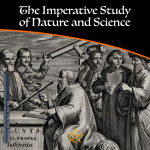 The Imperative Study of Nature and Science At some stage during Freemasonry's Second Degree, the candidate is advised that there is now permitted, something like, the extension of their research into the hidden mysteries of nature and science. Such is an excellent permission and one that each and every Freemason should pursue with awe and passion. |
 Pure Ancient Masonry; P4. A Companion in Rule, Building a better world P4. A Companion in Rule, Building a better world - The four parts of Pure Antient Masonry comprise the ‘body’ Masonic; they are the building blocks of the vital relevance, through enhanced citizenship, wherein the soul of Freemasonry abides. |
 Pure Ancient Masonry; P3. The Master, Building Better Character Part 3: The Master, Building Better Character - Being raised is a transition from knowledge to wisdom. |
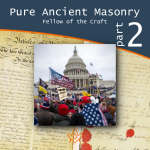 Pure Ancient Masonry; P2. A Fellow of the Craft Part 2: A Fellow of the Craft, Building Better Knowledge. Pure Antient Masonry consists of four parts. ‘Building the Temple’ is the fundamental Masonic allegory for building better people; this must be understood as a seamless whole: |
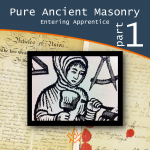 Pure Ancient Masonry; P1. An Entering Apprentice Part 1. An entering apprentice: Building Better Communities; Pure Antient Masonry consists of four parts. ‘Building the Temple’ is the fundamental Masonic allegory for building better people to build a better world |
 Pure Ancient Masonry; Intrduction This series will consider the defining characteristics, lessons and benefits of Three Degrees, the Order of the Royal Arch and when conjoined, Pure Ancient Masonry. |
 The Christianising of British Freemasonries - P4 This concluding article in the series considers the separation of British freemasonries from the Grand Orient of France (GOdF) and maintaining fraternity with the Prussian Grand Lodge of the Three Globes. |
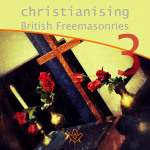 The Christianising of British Freemasonries - P3 Discover the battle for the 'soul' of Masonry. Part 3. French Perdition: ‘…for what fellowship hath righteousness with unrighteousness’? |
 The Royal Arch – ‘the fourth step in regular Freemasonry’ United Grand Lodge of England, has now designated the Royal Arch, the fourth step in regular Freemasonry, it therefore must be concluded that…publications…should now be revised, and based on attracting to the benefits of the four steps. |
 The Christianising of British Freemasonries - P2 How might the battle for the souls of Freemasonries be identified in a way that ensures thriving in the 21st Century? There is no guarantee of the immortality of the soul of Freemasonry! ‘We study the past in order to free ourselves from it.’ (Hariri) |
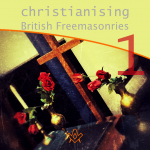 The Christianising of British Freemasonries - P1 This four-part series considers: 1. the separation of British Freemasonries from the Grand Orient of France (GOdF); and, 2. maintaining fraternity with the Prussian Grand Lodge of the Three Globes. |
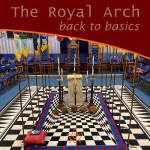 The Royal Arch - Back to Basics In the Royal Arch ceremony, the sojourners are buried with their tools in a vault. The sun, at its highest, provides enlightenment and the principal sojourner is returned to the former companions of his toil |
 The Holy Land and the Holy Sites P4 Fourth instalment of the four-part series, considers ‘masonic’ aspiration and activity regarding the Holy Land and The Holy Sites |
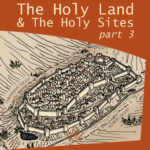 The Holy Land and The Holy Sites P3 Third instalment of the four-part series, considers ‘masonic’ aspiration and activity regarding the Holy Land and The Holy Sites |
 The Holy Land and The Holy Sites P2 The four-part series will consider ‘masonic’ aspiration and activity regarding the Holy Land and The Holy Sites |
 The Holy Land and The Holy Sites P1 In this four-part series, we will consider ‘masonic’ aspiration and activity regarding the Holy Land and The Holy Sites |
 Science and Citizenship: Towards a 21st Century Masonic Mindset. |
 Towards a 21st Century Masonic Mindset: Part 3 ‘Freemasonries’ and the Fourth Industrial Revolution |
 Towards a 21st Century Masonic Mindset: Part 2: ‘Freemasonries’ and Religiosity. |
 Towards a 21st Century Masonic Mindset: Part 1: ‘Freemasonries’ and Governance. |
masonic knowledge
to be a better citizen of the world
share the square with two brothers

click image to open email app on mobile device







